
The First Barbary War (1801–1805), also known as the Tripolitanian War and the Barbary Coast War, was the first of two Barbary Wars, in which the United States and Sweden fought against the four North African states known collectively as the "Barbary States". Three of these were nominal provinces of the Ottoman Empire, but in practice autonomous: Tripoli, Algiers, and Tunis. The fourth was the independent Sultanate of Morocco.

The Barbary Wars were a series of conflicts culminating in two main wars fought between the United States, Sweden, and the Barbary states of North Africa in the late 18th and early 19th centuries. The Swedes had been at war with the Tripolitans since 1800; they were eventually joined by the Americans.

The Second Barbary War (1815) or the U.S.–Algerian war was fought between the United States and the North African Barbary Coast states of Tripoli, Tunis, and Ottoman Algeria. The war ended when the United States Senate ratified Commodore Stephen Decatur’s Algerian treaty on December 5, 1815. However, Dey Omar Agha of Algeria repudiated the US treaty, refused to accept the terms of peace that had been ratified by the Congress of Vienna, and threatened the lives of all Christian inhabitants of Algiers. William Shaler was the US commissioner in Algiers who had negotiated alongside Decatur, but he had to flee aboard British vessels and watch rockets and cannon shot fly over his house "like hail" during the Bombardment of Algiers (1816). He negotiated a new treaty in 1816 which was not ratified by the Senate until February 11, 1822, because of an oversight.

The Maghreb, also known as Northwest Africa, the Arab Maghreb, and Barbary, is a subregion of North Africa that is effectively a western part of the Arab world and is predominantly Muslim. The region includes Algeria, Libya, Mauritania, Morocco, and Tunisia, which are all member states of the Arab Maghreb Union (AMU). The Maghreb additionally includes the disputed territories of Western Sahara and the cities of Ceuta and Melilla. As of 2018, the region had a population of over 100 million people.
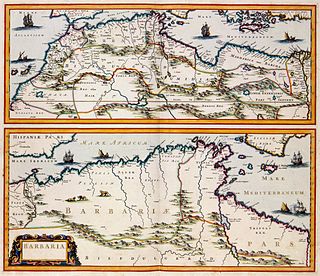
The term Barbary Coast was used by Europeans from the 16th century to the early 19th to refer to the coastal regions of North Africa, which were inhabited by Berber people. Today this land is part of the modern nations of Morocco, Algeria, Tunisia and Libya.

The Barbary pirates, sometimes called Barbary corsairs or Ottoman corsairs, were Ottoman and Berber pirates and privateers who operated from North Africa, based primarily in the ports of Salé, Rabat, Algiers, Tunis, and Tripoli. This area was known in Europe as the Barbary Coast, a term derived from the name of its ethnically Berber inhabitants. Their predation extended throughout the Mediterranean, south along West Africa's Atlantic seaboard and into the North Atlantic as far north as Iceland, but they primarily operated in the western Mediterranean. In addition to seizing merchant ships, they engaged in Razzias, raids on European coastal towns and villages, mainly in Italy, France, Spain, and Portugal, but also in the British Isles, the Netherlands, and Iceland. The main purpose of their attacks was slaves for the Ottoman slave trade as well as the general Arab slavery market in North Africa and the Middle East. Slaves in Barbary could be black, brown or white, Catholic, Protestant, Orthodox, Jewish or Muslim.

The Kingdom of Sicily was a state that existed in the south of the Italian peninsula and for a time the region of Ifriqiya from its founding by Roger II of Sicily in 1130 until 1816. It was a successor state of the County of Sicily, which had been founded in 1071 during the Norman conquest of the southern peninsula. The island was divided into three regions: Val di Mazara, Val Demone and Val di Noto; val being the apocopic form of the word vallo, derived from the Arabic word wilāya.
The Sack of Baltimore took place on 20 June 1631, when the village of Baltimore in West Cork, Ireland, was attacked by the Ottoman Algeria and Republic of Salé slavers from the Barbary Coast of North Africa – Moroccans, Dutchmen, Algerians and Ottoman Turks. The attack was the largest by Barbary pirates on either Ireland or Great Britain.

The regency of Algiers, was a vassal state of the Ottoman Empire in North Africa lasting from 1515 to 1830, when it was conquered by the French. Situated between the regency of Tunis in the east and the Sultanate of Morocco in the west, the Regency originally extended its borders from La Calle to the east to Trara in the west and from Algiers to Biskra, and after spread to the present eastern and western borders of Algeria.
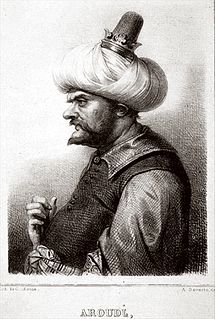
Oruç Reis; Arabic: عروج ريس; Spanish: Aruj; c. 1474–1518) an Ottoman seaman of Albanian origin, became bey (governor) of Algiers, beylerbey of the West Mediterranean, and admiral of the Ottoman Empire. The elder brother of the famous Albanian Ottoman admiral Hayreddin Barbarossa, he was born on the Ottoman island of Midilli and died in battle against the Spanish at Tlemcen in the Ottoman Eyalet of Algeria.

White slavery, white slave trade, and white slave traffic refer to the chattel slavery of White Europeans by non-Europeans, as well as by Europeans themselves, such as the Viking thralls or European Galley slaves. From Antiquity, European slaves were common during the reign of Ancient Rome and were prominent during the Ottoman Empire into the early modern period. In Feudalism, there were various forms of status below the Freeman that is known as Serfdom which could be bought and sold as property and were subject to labor and branding by their owners or demense. Under Muslim rule, the Arab slave trades that included Caucasian captives were often fueled by raids into European territories or were taken as children in the form of a blood tax from the families of citizens of conquered territories to serve the empire for a variety of functions. In the mid-19th century, the term 'white slavery' was used to describe the Christian slaves that were sold into the Barbary slave trade.
Jan Janszoon van Haarlem, commonly known as Murat Reis the Younger, was a Dutch fighter in the Ottoman Navy who converted to Islam after being captured by a Moorish state in 1618. He began serving as a Navy fighter, one of the most famous of the 17th-century "Salé Rovers". Together with other corsairs, he helped establish the independent Republic of Salé at the city of that name, serving as the first President and Grand Admiral. He also served as Governor of Oualidia.

The Turkish Abductions were a series of slave raids by Ottoman pirates that took place in Iceland between 20 June and 19 July 1627. Pirates from Morocco and Algeria, under the command of Dutch pirate Murat Reis, raided the village of Grindavík on the southwestern coast, Berufjörður and Breiðdalur in the Eastern Region, and Vestmannaeyjar ; they captured an estimated 400–800 prisoners to sell into slavery.
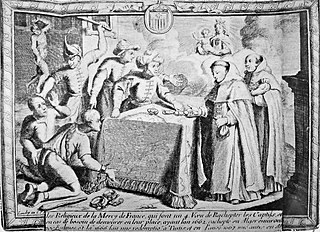
The Barbary slave trade refers to slave markets on the Barbary Coast of North Africa, which included the Ottoman provinces of Algeria, Tunisia and Tripolitania and the independent sultanate of Morocco, between the 16th and middle of the 18th century. The Ottoman provinces in North Africa were nominally under Ottoman suzerainty, but in reality they were mostly autonomous. The North African slave markets were part of the Arab slave trade.

There was a certain amount of cultural contact between Europe in the Renaissance to Early Modern period and the Islamic world, however decreasing in intensity after medieval cultural contact in the era of the crusades and the Reconquista.

Anglo-Turkish piracy or the Anglo-Barbary piracy refers to the collaboration between Barbary pirates and English pirates against Catholic shipping during the 17th century.

Slavery on the Barbary Coast was a form of unfree labour which existed between the 16th and 18th centuries in the Barbary Coast area of North Africa.
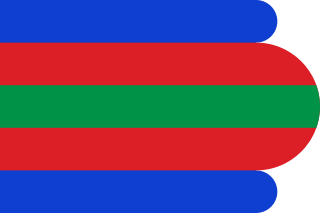
Ottoman Tunis refers to the episode of the Turkish presence in Ifriqiya during the course of three centuries from the 16th century until the 18th century, when Tunis was officially integrated into the Ottoman Empire as the Eyalet of Tunis (province). Eventually including all of the Maghrib except Morocco, the Ottoman Empire began with the takeover of Algiers in 1516 by the Ottoman Turkish corsair and beylerbey Oruç Reis. The first Ottoman conquest of Tunis took place in 1534 under the command of Barbarossa Hayreddin Pasha, the younger brother of Oruç Reis, who was the Kapudan Pasha of the Ottoman Fleet during the reign of Suleiman the Magnificent. However, it wasn't until the final Ottoman reconquest of Tunis from Spain in 1574 under Kapudan Pasha Uluç Ali Reis that the Turks permanently acquired the former Hafsid Tunisia, retaining it until the French occupation of Tunisia in 1881.
Usta Murad was a corsair captain and later Dey of Tunis from 1637 until his death.
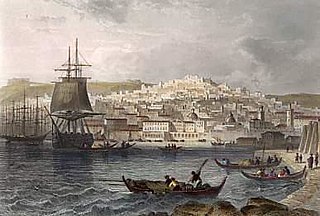
The Danish–Algerian War was a conflict lasting from 1769 to 1772 between Denmark-Norway and Eyalet of Algiers which was a province of the Ottoman Empire. It is also known as the Algerian Expedition, or "The War Against Algeria".
















